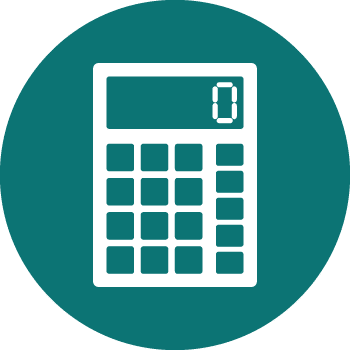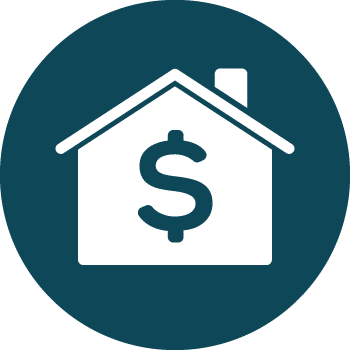Common Mistakes When Refinancing Your Home
Refinancing a home is an exciting step toward greater financial security for most folks. You can lower your house payment, reinvest your equity, increase the value of your home and do so much more. It all starts with the refinancing application and a lender you can trust, but there’s a few common pitfalls that inevitably trap inexperienced home owners. Lending Studios would rather help you avoid those potential pitfalls, thus, we’ve rounded up a number of the most common mistakes made by first time home owners and refinancers so that you won’t suffer any negative effects of a potential misstep.
The Attraction of Refinancing
If you don’t know already, refinancing can present an excellent option to people of all kinds of current financial standings. There’s a wide selection of different types of refinancing options. You can choose different term limits for your new mortgage, though they generally fall in the 15 year and 30 year range. You can select a cash-out refinance, utilize the VA benefits available for refinancing and so much more. Many United States homeowners use refinancing as a way to take advantage of a lower interest rate, as you could save tens of thousands of dollars on the total cost of your home. You could lower your monthly payment, choose to shorten the total amount of time you’ll be paying off your loan, and so much more.
In short, refinancing can grant you options to improve your current financial standing and start taking your future by the reigns. You can learn more about them below.

The Basics of Refi
Want a Shorter Term?
Choose the Classic
Keep It Simple & Elegant
Get Your Cash Now
How To Refinance Your Home Successfully

Don’t Fall Prey to These Pitfalls:
Fixating on Your Rate
Not Keeping Tabs on Loan Costs
Leaving Your Break-Even Point Uncalculated
Timing Mortgage Rates
Not Saving Enough Money
Refinancing Frequently
Cashing-Out All Your Equity
Not Researching The Real Estate Market
Fixating on Your Rate
While the rate available for your refinance is obviously a major deciding factor on whether or not you’d like to move forward with your refinancing, it’s important not to fixate on the new rate. Focusing only on the mortgage rate when comparing potential lenders to do your refinance through is less productive than you’d think. There are so many different factors that go into the price of a refinance that one lender might charge you more in total fees, yet have a lower interest rate as a means of attracting potential clients. Mainly, this comes together in closing costs. While a low mortgage rate will look attractive no matter what, if it comes in a package with really high closing costs, it’s all a ruse anyway. Always explore the loan origination fees, points, credit reports and any other fees that a lender is looking to apply to the final price of your loan.
These additional fees will not be finalized until you have your Good Faith Estimate in-hand. However, if you see any changes on that document that were not already expressed, that’s a major red flag.
Keeping Tabs on Loan Costs
In general, the closing costs will land at around 2% to 6% of the total amount of your refinance loan. You could pay these out of pocket if you’d like, or choose to roll them into the new loan. It’s always a better idea to pay these in cash, unless you’re really struggling to find the funds to do so. Paying interest on a larger sum, simply because you roll closing costs into the total price of your loan makes the entire refinancing process more expensive in the long run. So, be sure to have a plan of attack when it comes to the fees and costs associated with the refinancing process, lest you make a hasty decision that ends up costing you more money.
Leaving Your Break-Even Point Uncalculated
Before making any major financial decision, you should have some idea of your break-even point. Banks, for example, require that you provide one in your business plan before acquiring a new business loan because it’s an investment. Therefore, any investment you make should be treated with similar caution and care.
For example, if you’re planning on refinancing in order to take advantage of a lower interest rate, you’ll need to start your considerations by making a plan of how long you intend to remain in the home. If you find that, in interest alone, you’ll be saving around $200 per month on your home mortgage payment, but the loans closing costs are around $5000, it’ll take you around 25 months to break even through the means of those monthly savings. If, after you’ve calculated your break even costs, you’re still not sure whether you’d like to stay for the full 25 months, then the savings you’ll access through your refinance won’t actually be worth it. You’ll end up spending more in the closing costs than you will save through the monthly price reduction.
Timing Mortgage Rates
Plenty of homeowners looking to refinance will start watching interest rates like a hawk. They may even watch for daily changes hoping to jump in with an application the moment interest rates drop to the rate they want. However, this usually backfires and ends with interest rates spiking and them actually missing the would-be lowest point as they hold out for an even better deal. Trying to time an interest rate is quite a bit like trying to time the stock market. While skilled professionals can manage it from time-to-time, the average person likely won’t be able to. Use market signals that are easy to read. General statements like “the rates are much lower than they have been in the last decade,” is a good indication that the interest rates will land in your favor during this period of time.
Timing Mortgage Rates
Plenty of homeowners looking to refinance will start watching interest rates like a hawk. They may even watch for daily changes hoping to jump in with an application the moment interest rates drop to the rate they want. However, this usually backfires and ends with interest rates spiking and them actually missing the would-be lowest point as they hold out for an even better deal. Trying to time an interest rate is quite a bit like trying to time the stock market. While skilled professionals can manage it from time-to-time, the average person likely won’t be able to. Use market signals that are easy to read. General statements like “the rates are much lower than they have been in the last decade,” is a good indication that the interest rates will land in your favor during this period of time.
Refinancing Frequently
Since interest rates are hitting record lows lately, people who recently refinanced might be tempted to do so once more to take advantage of the ever dipping interest rates. Locking in the lowest interest rate possible is an attractive prospect, and though you may be tempted to refinance a second or third time this is highly inadvisable. Refinancing, as we’ve already mentioned, costs a fair amount of money. Piling up closing costs time-after-time will ensure that, while you may be paying less on your monthly living expenses, your closing costs are stacking up every time you refinance, making your break even point even farther off.
Cashing-Out All Your Equity
It’s true that cash-out refinances provide an exceptional opportunity to access the cash funds you need to improve the value of your home or to reinvest somewhere else. That opportunity, however, can be easily abused. Many people borrow money against their home equity and see no major consequences, but that’s because they don’t borrow too much against their home equity. Leaving yourself exposed by taking out too much of your home equity is a major problem. If housing prices should fall after you do a cash-out refinance, you’ll be suddenly under water on your loan, as the loan will be larger than the house’s actual value. Be sure to avoid boosting payments too high either. You don’t want the payment to climb so high that, in the event of a job loss or something similar, you won’t be able to pay your mortgage.
Not Researching The Real Estate Market
In regard to home worth, it’s important that you perform some minor research before jumping right into your refinancing process. You should start by checking your home’s worth and potentially speaking to a local real estate agent. Zillow can give you a very broad range of what your house might be worth, but accessing real data about what houses in your specific area are selling for can grant you an impressive advantage when deciding on your next financial step. That research will grant you a clear view of common mortgage rates, closing costs, and new payments on your home without having to take a pull on your credit score and produce the resulting and harmful drop. Armed with that information, you’ll be able to determine more readily if refinancing is a good decision at the moment based on your specific needs and expectations.
Don’t Wait to Compare
Now that you’re ready to really evaluate your refinancing options, you can turn to LendingStudios.com. Explore our various resources, and start comparing rates today. We’re here to provide you with a lending experience that you can trust. Learn more about our lending services and more today.
Mortgage Calculators
Quickly predict your monthly mortgage payment and interest with this customizable tool!
Mortgage Resources
Leverage the tools you need to find a borrowing solution that fits your particular needs and budget.
Mortgage FAQs
Get answers to the most commonly asked mortgage questions.




